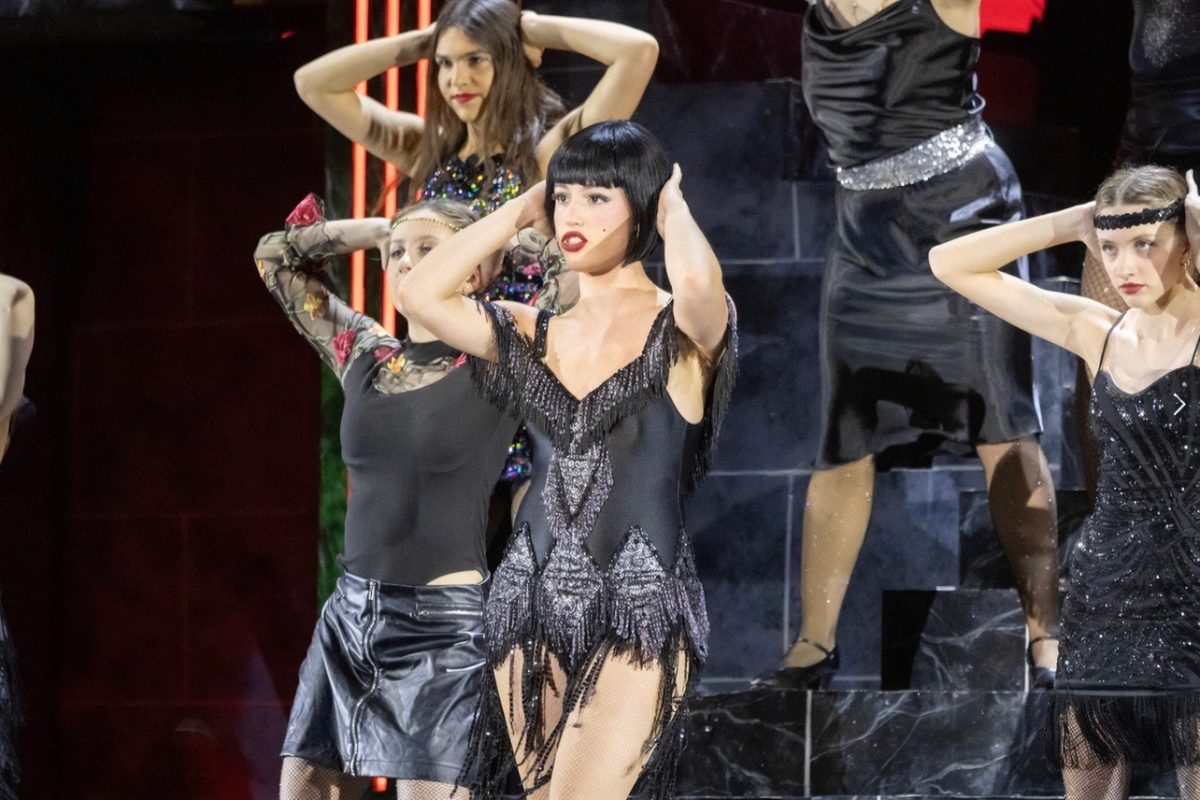A rainbow bucket hat, a gangster-leprechaun, and a shoutout to Ohio were all it took to send an elementary school gym into three straight minutes of laughter, senior Mia Hermann, Drama Club President, said. These performances were created by the Glenbrook Story Project, a collaboration between South and Willowbrook Elementary School that brings young students’ imaginations to life, Hermann said.
Each spring, the Glenbrook Story Project gives young writers the opportunity to see their work staged by high school students, Hermann said. The project, created by Hermann, was inspired by a similar initiative her cousin participated at her middle school After refining the concept for South and Willowbrook, Hermann worked with Drama Club members and Mandi Corrao, Drama Director and English and Broadcasting Teacher, to coordinate the project with Willowbrook Elementary, which began last year.
“Once [the] stories are adapted, we have a week to block, costume, [and] prop design,” Hermann said. “It’s a lot to manage, but the group of people [involved] is really great, and we always have [a] super fun [time] adapting the stories.”
The project offers a refreshing break from the more mature, gritty performances typically staged at South, junior Bekah Vogt, Drama Club Secretary said. The Glenbrook Story Project stories are lighthearted, fun, and low-pressure, allowing students to enjoy the process of bringing a playful work to life.
“[The elementary schoolers] have very silly stories,” Vogt said. “Even though we do feel pressure to make sure that elementary school [students] like their stories, we have a lot of fun with it. When we make [the stories] our own, we add our own acting flair to it and make them come alive.”
This year, Vogt adapted a story inspired by the childhood classic “The Day the Crayons Quit”, but with a food-based twist. The challenge lies in staying true to the young writers’ original vision while adjusting for some of the quirks in their writing, such as misspellings and playful names, Vogt said.
“I love [the students’] imagination, I love the creativity,” Vogt said. “We try to have our plays be as close to the source material as possible to keep their stories alive, [and] keep them how [the elementary students]] envisioned them,” Vogt said.
Student-led projects like the Glenbrook Story Project are essential to high school theater, as creativity thrives most when students are trusted to take the lead, Corrao said.
“[Part] of my [job] is to make sure that students [lead] and create art without feeling like they have somebody constantly telling them what to do,” Corrao said. “These student-led projects are the perfect opportunity for that. I’m able to provide guidance, but [also] let [drama students] be creative and artistic [to] give their own personal flair to the art that they’re creating.”
For Hermann, the project is more than just a performance, it’s about sparking creative thinking and showing young students that anyone can be a storyteller. By bringing their ideas to life, she hopes to inspire a lasting connection to the arts, Hermann said.
“I hope they see the power of [storytelling], no matter how silly or insignificant they might seem,” Hermann said. “I wanted to help spark that enthusiasm about theater, because theater is storytelling.”



![LEFT, RIGHT, CENTER: Members of the Drama Club gather in the drama room to block their scenes for their incoming production as part of the Glenbrook Story Project. [Left to right] sophomore Riley Talbot, senior Lukas House, and senior James Dravenack act out a scene called Dragon House Carnival.](https://theoracle.glenbrook225.org/wp-content/uploads/2025/05/MG_4193-800x1200.jpg)



